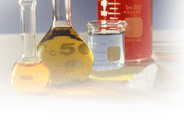|
Lutein: Nature*s Golden Guardian of Vision
and Wellness
Lutein, a xanthophyll carotenoid (C₄₀H₅₆O₂), is a vital phytochemical renowned for its role in ocular
health and systemic antioxidant protection (Johnson et al., 2023). As a
primary component of the macular pigment in the human retina, lutein filters
harmful blue light and neutralizes reactive oxygen species, safeguarding
photoreceptor cells from oxidative damage (Age-Related Eye Disease Study 2
[AREDS2], 2013). Alongside its isomer zeaxanthin, lutein constitutes the
macular pigment, critical for reducing the risk of age-related macular
degeneration (AMD) and cataracts〞leading causes of irreversible vision loss
globally (Ma et al., 2022).
Natural Sources and Bioavailability
Lutein cannot be synthesized by humans and must be obtained through diet or
supplementation (Nolan et al., 2007). Rich dietary sources include leafy
greens (kale, spinach), egg yolks, and marigold flowers (Tagetes erecta), the latter being the primary commercial
source for high-purity extracts (Perry et al., 2009). Bioavailability is
enhanced when consumed with lipids, as lutein*s lipophilic nature requires micellarization for intestinal absorption (Stringham et
al., 2016).
Biomedical and Dermatological Benefits
Beyond vision, lutein exhibits systemic antioxidant and anti-inflammatory
properties. It mitigates UV-induced skin damage by quenching singlet oxygen
and reducing lipid peroxidation, making it a valuable ingredient in
anti-aging skincare (Roberts et al., 2009). Emerging research also links
lutein to cognitive health, with higher serum levels correlating with
improved memory and executive function in aging populations (Johnson et al.,
2023).
Industrial and Nutraceutical Applications
At Biocaxis, we produce lutein through sustainable
supercritical CO₂ extraction,
ensuring >95% purity and minimal environmental impact. Our lutein is
stabilized via microencapsulation to prevent oxidation, ideal for:
- Dietary Supplements: Softgels and gummies targeting eye health.
- Functional Foods:
Fortified beverages, dairy, and infant formula.
- Cosmeceuticals:
Sunscreens and serums for UV protection (Perry et al., 2009; Stringham
et al., 2016).
Commitment to Innovation
Biocaxis employs cutting-edge enzymatic
esterification to enhance lutein*s stability and bioavailability. Rigorous
quality control ensures compliance with USP/EP standards, including heavy
metal screening (<10 ppm) and microbial limits (<100 CFU/g) (Alves-Rodrigues
& Shao, 2004).
Explore how Biocaxis*s premium
lutein can elevate your product line, combining nature*s protection with
scientific innovation.
References
- Age-Related Eye Disease Study 2 (AREDS2) Research
Group. (2013). Lutein + zeaxanthin and omega-3
fatty acids for age-related macular degeneration. JAMA
Ophthalmology, 131(5), 564每572. DOI: 10.1001/jamaophthalmol.2013.2851
- Alves-Rodrigues, A., & Shao, A. (2004). The
science behind lutein. Toxicology Letters, 150(1), 57每83. DOI: 10.1016/j.toxlet.2003.10.031
- Johnson, E. J., et al. (2023). Lutein
and brain health. Annual Review of Nutrition, 43, 95每117. DOI: 10.1146/annurev-nutr-061022-030322
- Ma, L., et al. (2022). Lutein
and zeaxanthin in age-related macular degeneration: A systematic review
and meta-analysis. Nutrients, 14(4), 827. DOI: 10.3390/nu14040827
- Nolan, J. M., et al. (2007). Macular
pigment optical density in an ageing Irish population: The Irish
Longitudinal Study on Ageing. Ophthalmic Research, 44(3), 131每139.
DOI: 10.1159/000316025
- Perry, A., et al. (2009). Xanthophyll
(lutein, zeaxanthin) content in fruits, vegetables, and corn and egg
products. Journal of Food Composition and Analysis, 22(1), 9每15.
DOI: 10.1016/j.jfca.2008.07.006
- Roberts, R. L., et al. (2009). Skin
photoprotection by natural carotenoids: Effects of ultraviolet
radiation-induced reactive oxygen species. Free Radical Biology and
Medicine, 47(6), 659每667. DOI: 10.1016/j.freeradbiomed.2009.06.007
- Stringham, J. M., et al. (2016). Macular
carotenoid supplementation improves visual performance, sleep quality,
and adverse physical symptoms in those with high screen time exposure.
Foods, 5(4), 47. DOI: 10.3390/foods5040047
|


